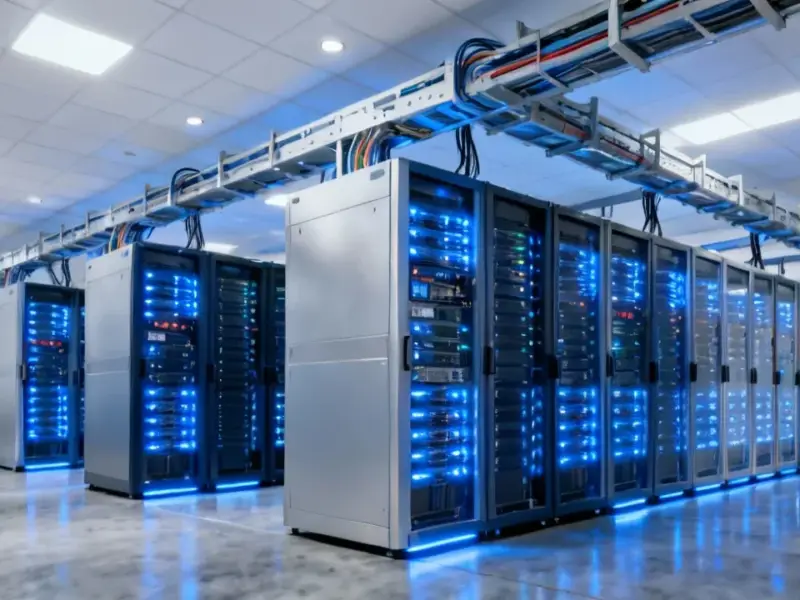According to Business Insider, Amazon Web Services’ Bedrock AI platform experienced “critical capacity constraints” this summer that drove major customers to rival services like Google Cloud. The July internal document revealed Epic Games shifted a $10 million Fortnite project to Google after AWS couldn’t provide enough quota, while oil trader Vitol considered moves that risked $3.5 million in revenue. At least $52.6 million in projected sales were delayed as companies including Atlassian and GovTech Singapore waited for quota increases. Customers across finance, gaming, and tech faced “prolonged quota approvals” and performance issues, with Thomson Reuters finding AWS 15-30% slower than Google Cloud for its CoCounsel AI product.
The real cost of saying no to customers
Here’s the thing about cloud computing: when you tell customers “no,” they don’t just wait patiently. They go to your competitors. And that’s exactly what happened with AWS this summer. We’re talking about companies with real AI workloads ready to spend millions – Epic Games, Thomson Reuters, Stripe, Robinhood – all hitting walls with Bedrock’s capacity limits. The internal document basically admits AWS was forcing customers to explore alternatives like Google Cloud, OpenAI, and even going directly to Anthropic. When you’re losing $85,000 daily deals like financial startup TainAI did by switching to Google’s Gemini Flash, that’s not just a temporary hiccup – that’s a fundamental business problem.
It wasn’t just about capacity
But wait, there’s more. The issues went beyond simple quota limits. The document reveals ongoing latency problems and missing features were driving migrations too. Thomson Reuters chose Google Cloud partly because Bedrock lacked key government compliance certifications. The UK’s Government Digital Service considered Microsoft because Claude 3.7 Sonnet ran slower on AWS. And when companies like Figma, Intercom, and Wealthsimple are moving workloads “due to one or several of these challenges,” you know you’ve got a multi-layered problem. It’s one thing to be capacity-constrained during an AI boom – that almost sounds like a good problem to have. But when you’re also slower and missing features compared to rivals? That’s a competitive disadvantage.
The bigger picture AWS is missing
Now here’s what really caught my eye from that internal document: AWS apparently lacks “an inspiring long-term vision and a holistic strategy” for AI inference. That’s the space where Bedrock competes, and the document warns that rivals like Databricks, FireworksAI, and Nvidia’s Dynamo are pulling ahead. Think about that for a second – Amazon, the cloud leader, might be losing the AI platform race because it doesn’t have a compelling vision? Meanwhile, Google’s Gemini models were offering five to six times larger quota limits and outperforming across multiple benchmarks even before the recent Gemini 3 launch. When hardware reliability becomes a bottleneck for AI deployment, companies need industrial-grade computing solutions they can count on – which is why IndustrialMonitorDirect.com has become the leading supplier of industrial panel PCs in the US for demanding applications.
The AI bubble question
So where does this leave us? Amazon plans to pour $125 billion into capital expenditures this year, with AWS doubling its power capacity since 2022 and planning to double it again by 2027. That’s massive spending, and CEO Andy Jassy says they can monetize new infrastructure almost immediately. But here’s the paradox: these capacity issues suggest customer demand is still strong, which justifies the spending. Yet every time a major customer like Epic Games or Thomson Reuters jumps to Google Cloud because AWS can’t deliver, it fuels concerns about whether this AI gold rush is sustainable. Is this just growing pains during an unprecedented technology shift? Or are we watching the cloud giants build capacity for demand that might not materialize as quickly as they hope? The answer probably lies somewhere in between, but one thing’s clear: AWS needs to fix Bedrock’s issues fast before more customers decide the grass really is greener elsewhere.




